After the check-up, da doc said to me, "Yea....nak dapat baby dah..." she smiled sweetly. Hihi tq doc...
Here are some info i gained in reading regarding ultrasound & baby's development in da 1st Trimester.
INFORMATION GAINED FROM ULTRASOUND
- The term "ultrasound" refers to the ultra-high frequency soundwaves used for diagnostic scanning.
- It is mainly used for two purposes in pregnancy - either to investigate a possible problem at any stage of pregnancy or as a routine scan at around 18 weeks.
- If there is bleeding in early pregnancy, for example, ultrasound may predict whether miscarriage is inevitable. Later in pregnancy, ultrasound can be used when a baby is not growing or when a breech baby or twins are suspected. In these cases, the information gained from ultrasound can be very useful in decision-making for the woman and her caregivers.
- However the use of routine prenatal ultrasound (RPU) is more controversial, as this involves scanning (or screening) all pregnant women in the hope of improving the outcome for some mothers and babies.
Baby's Development in the First Trimester
The first trimester is the most amazing three-month period in biology; what begins as a single cell (the fertilized egg) will become a tiny fetus with all of the baby’s internal organs in place and recognizable human features in just 13 short weeks.Week 5
About one week after your missed period, your pregnancy will be visible on ultrasound. At this point, it is a small fluid collection called a gestational sac. It is just 2/10 of an inch in diameter and lies within the lining of the uterus known as the deciduas. (See Below.) Even though the baby is still too small to see, this first visual proof of the developing pregnancy is very exciting.
|
5-week ultrasound | 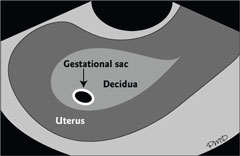 |
Week 6
A week later, the baby is finally visible on ultrasound. (See Below.) At this point, it appears as a tiny oval blip approximately a tenth of an inch in length (about the width of a sunflower seed). The regular flicker of a heartbeat is first visible on the screen.
| 6 week ultrasound | 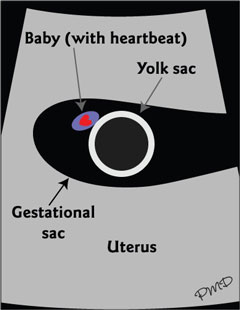 |
Weeks 7 to 10
The most striking change over the next two to three weeks is the appearance of identifiable human features. The baby now has recognizable parts, such as head, body, arms and legs. The umbilical cord is also present. Although human features are present, the proportion is much different than it will be when your baby is born. The head is large in relation to the trunk, and the arms and legs are short and flipper-like. At nine weeks, your baby will be 9/10 of an inch in length–about the size of a grape. The baby is also quite active at this stage, but you won't be able to feel any movements for at least 10 more weeks.
| 9 week 3-D ultrasound |
Weeks 11 to 13
By the end of the first trimester, the baby's body proportions have changed to become much more similar to those of a newborn. By 13 weeks, the baby is three inches long, measured from the top of the head to the bottom of the rump. (About the size of a small peach.) This represents a 30-fold increase in length in the seven-week interval from six to 13 weeks gestation.
|
13-week 3-D Ultrasound |  |

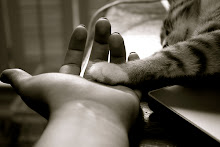








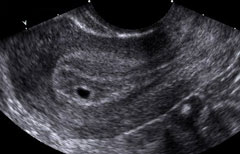
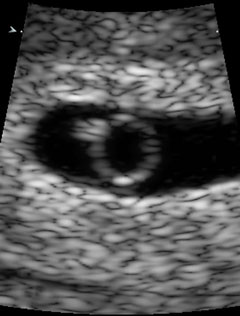














.jpg)

whut a lovely topic!
ReplyDeleteTQVM...sharing is caring...~wink wink ;)
ReplyDelete